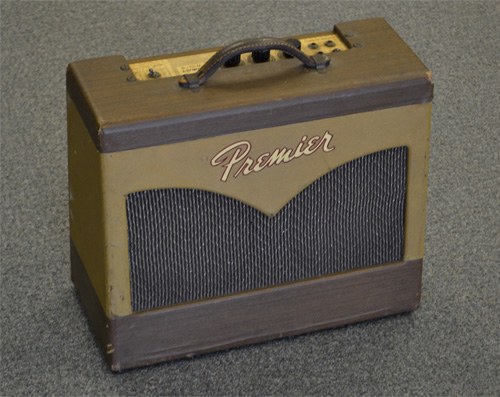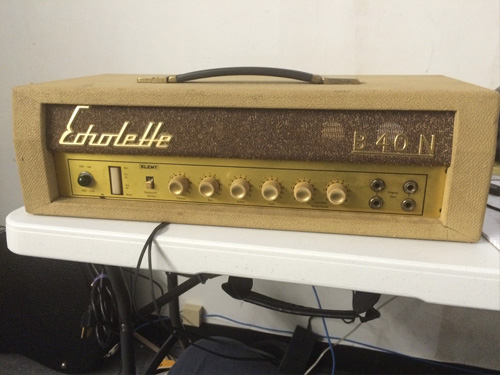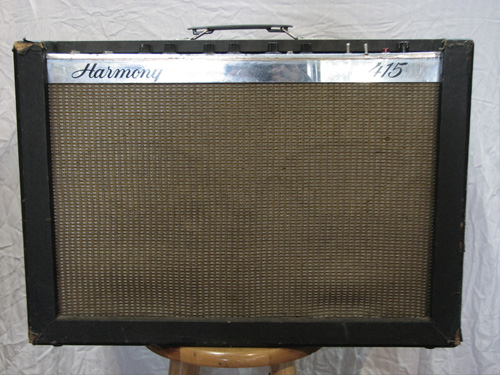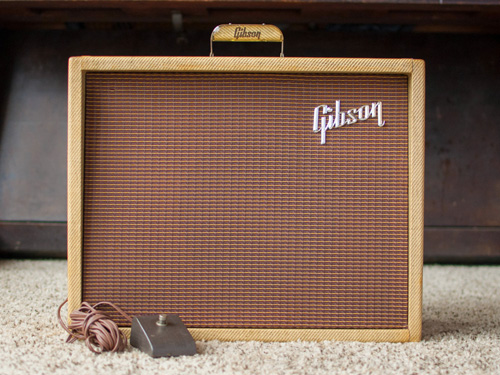What’s better than digging up a musty, dusty, overlooked old guitar amp that proves to be an outrageous performer for short money? Not much, as far as most guitarists are concerned.
About a year ago, I rounded up “5 Vintage Picks from Modern Amp Masters” recommended by some of the best tube-amp makers working today. There are plenty more unsung tone machines out there, though, so the topic is ripe for a sequel. In this installment, we drop in on several more boutique-grade tone gurus to probe their sleeper-amp picks. We’ll also revisit the bottomless font of tube-toned knowledge that was the late, great Ken Fischer and indulge—if you’ll permit me—in one sneaky Brit "unter-classic" from yours truly.

The Cleveland-based amp maker Mike Zaite, known to most of us simply as Dr. Z, has built a stellar reputation for crafting relatively simple, extremely well-built amps that occasionally build on vintage inspirations without ever actually “copying” anything in particular.
“As for a cool old amp,” the Doc tells us, “check out the Premier Twin 8. It is a single-ended output, pure Class A, 2 x 8" combo with tremolo, with two alnico speakers and the smoothest overdrive from a simple early ’60s amp. Crank it up and forget about it—fun for the whole day.” Zaite adds, “Although it’s often used as a harp amp [a classic, at that], it sounds excellent with a guitar driving it.”
Browse Premier Amps on ReverbA German ex-pat, designer and co-founder of Komet Amplification — alongside Michael Kennedy — Holger Notzel turns to a Teutonic creation for his selection. From the narrow cab, you might guess the Klemt Echolette B40N was a solid-state amp; you’d be very wrong.

“It’s the exact [tweed] Bassman circuit, but EL34 powered, and ultra linear,” Notzel says. “It has three ECC83s, two EL34s and a GZ34 rectifier, and was built a year or two before Marshall copied the same circuit for their JTM45. The B40N is a killer sounding amp, especially clean. Like a tweed Bassman with stouter, tighter bottom end. Great pedal platform, too.”
Holger says that not many of these German tube amps were made in 1961-’62, perhaps 500 at most, so now that the cat’s out of the bag they might be very hard to find, but have been extremely affordable on the used market before now.
“I think the reason these didn’t catch on is because most people back then heard them on the Echolette cabinets, which sounded weird,” Notzel says. “On an old Marshall cab, this thing just slays.”
Browse Echolette on Reverb
Although he passed away in 2006, a little bit of the electronic DNA of the legendary Ken Fischer of Trainwreck fame lives on in the two contemporary makers above, since he contributed circuit designs to both Komet and Dr. Z. Back in 2005, though, Ken recommended the humble Harmony 415 to me as a hidden gem.
“Particleboard cabinet,” Fischer commented, “but it does come with two Jensen C12Rs. It came from the factory with two Mullard EL84s, and just plugging straight in, it doesn’t sound like that much, but plug an overdrive into it and it’s a killer-sounding amp. And the Jensens they used were painted black, so people don’t recognize them as Jensens. And that’s an amp that’s selling for $75 or $100, maybe $150 [in the late ’90s and early ’00s].”
Any particular overdrive pedal? Fischer was fond of the Menatone Blue Collar for this application. “Put that into the Harmony and it sounds great. I had a Marshall 18-watt combo down here that I was working on for a friend, and we put a guitar straight into that Marshall, then into the Harmony through that Menatone pedal, and it just devastated the Marshall. So there you’ve got $300-worth of amp and pedal killing that $6,000 Marshall. We put the overdrive into the Marshall and it sounded fine, but it still didn’t sound as good as it did with the Harmony. So there you go.”
Browse Harmony Amps on ReverbAs the proprietor of the Pennsylvania-based Alessandro High-End Products, George Alessandro is known for designing and building a range of canine-themed, hand-wired amps made to exacting standards with top-notch components — solid-gold chassis option, anyone? In addition to his new builds, however, Alessandro is also a go-to vintage repair and modification expert, so he’s well-versed in getting great tone out of old tube amps.

Unable to stick to just one pick, George points us first toward a maker whose amps never earned a fraction of the kudos of their guitars of the era, although they have been gaining ground with players and collectors in recent years.
“Late ’50s and early ’60s Gibson GA-18 and GA-20 combos, the tweed and tweed/brown ones, are some of the best little amps of the era. I think they sound better than the tweed Fenders of the same time,” Alessandro says.
Alessandro is also eager to recommend another amp from a stable tipped above: Premier. “The [’50s] Premier 120 is also a sleeper, that’s really the only good traditional one in the line, with two 6V6s into a Jensen P12R.” As an enthusiastic afterthought, he also adds, “By the way, the biggest sleepers are the old mono PA amps from the late ’40s and ’50s, by Stromberg-Carlson in particular. Put a quarter-inch input jack and output jack on them, crank them up, and they sound like single-digit-powered Marshalls.”
Browse Gibson Amps on Reverb
This is an amp that I occasionally wax lyrical about, at least when it occurs to me to do so, and one that’s worth putting out there for wider recognition. The Dominator reaches way back to 1956 in its collectible V-front incarnation, back when Charlie Watkins put his own surname on it, before deciding to call his amps WEM because he liked how it looked.
The model persisted through the ’60s, but I feel the Mk III rendition that came in around 1972 represents some of the best value of the bunch, in what is arguably a more practical amp. These have become somewhat collectible now, but can usually be had for well under $1,000 if you shop around, and they offer a lot of vintage-British tone mojo for that money.
I acquired a WEM Dominator Mk III in the late ’90s when I was living, working and playing in London, and they were commonly available at the time for the equivalent of a couple hundred bucks. I bought mine from Jamie West-Oram, guitarist with The Fixx, who apologized for the combo’s rough cosmetic shape; it had been “redecorated” years before by an aesthetically-challenged punk guitarist. But man, the thing sounded fierce; a real mix of Marshall and Vox in about 18 watts of EL84-fuelled goodness, with a slightly raw edge when cranked that was pure rock’n’roll. Yep… shoulda’ kept it.
Browse WEM Amps on ReverbABOUT THE AUTHOR: Dave Hunter is a writer and musician who has worked extensively in the USA and the UK. The author of The Guitar Amp Handbook, Guitar Effects Pedals, Guitar Amps & Effects For Dummies, The Gibson Les Paul and several other books. Dave is also a regular contributor to Guitar Player and Vintage Guitar magazines.
